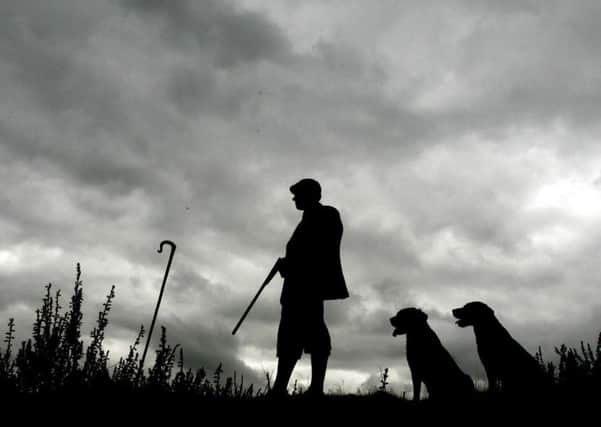Weather-hit grouse shooting season costs rural businesses millions


As this year’s four-month red grouse season came to a close today, the Moorland Association said the North of England’s rural economy had taken “a substantial direct” hit from a stripped back shooting programme brought about by difficult weather conditions.
An estimated 70 per cent of shoot days were cancelled across the North due to low red grouse numbers.
Advertisement
Hide AdAdvertisement
Hide AdThe shortage of the bird was triggered by an intensely cold February followed by the prolonged summer drought that stunted growth of heather which red grouse rely upon as their principal source of sustenance.
Amanda Anderson, director of the Moorland Association, said: “2018 has been a disappointing year for most of the grouse shooting community in England where overall 70 per cent of shoot days were cancelled due to low red grouse numbers. The knock-on negative economic impact has been significant and rural businesses have really felt the hit.”
Livelihoods in remote upland communities have suffered the most from the ravaged shooting season, including in the Nidderdale Area of Outstanding Natural Beauty and the Yorkshire Dales.
Nick Downshire, owner of Jervaulx Moor near East Witton in Wensleydale, said: “We are a small moor but we would hope, in a good season to have at least 10 days shooting. This year were able to do four, which is typical of what has happened to a lot of moors. Inevitably that has a knock-on effect.”
Advertisement
Hide AdAdvertisement
Hide AdRed grouse are wild birds and cannot be reared. Only when there is a healthy surplus of grouse can they be harvested for shooting.
“There is only so much we can do about it,” Mr Downshire said of the effect the weather has had this year. “In a year like this we stop shooting early and hope that enough young grouse get through the winter to breed next year.”
Roy Burrows, gamekeeper and co-ordinator of the Nidderdale Moorland Group, said it had been a “tough” season for grouse shooting in Nidderdale where nearly 75 per cent of shoot days were cancelled.
“Our local community and businesses are heavily reliant on grouse shooting during the season and the lack of shoot visitors has had a big effect on the pubs, hotels and restaurants in our area,” Mr Burrows said.
Advertisement
Hide AdAdvertisement
Hide AdGame dealers, contractors and other ancillary businesses have also lost much-needed income during what is already a quieter time for businesses that rely on grouse shooting for revenue during the shoulder months of the tourist season.
Paul Klein, who runs the Blue Lion pub and hotel in East Witton, near Jervaulx Moor, lost dozens of nights of bookings.
He said: “We lost a lot of bookings, particularly in August and September. It was an appalling season.”
Despite widespread cancellations, estates in the North Yorkshire Moors Moorland Group reported a healthier red grouse shooting season. In some cases full shooting programmes were fulfilled.
Advertisement
Hide AdAdvertisement
Hide AdThe pheasant shooting season is now well underway across England, Scotland and Wales, having started at the beginning of October. It runs until February 1.
‘INVESTMENT WILL CONTINUE’
Grouse moor owners in England are continuing to invest more than £50m a year into the conservation of upland landscapes, despite the poor shooting season, the Moorland Association said.
Initiatives include peatland restoration, predator control and habitat management, the association’s director Amanda Anderson said.
“Grouse estates across the country continue to invest heavily in the conservation of the moorlands benefitting a wide range of flora and fauna, including vulnerable ground nesting birds such as the curlew, merlin, lapwing, ring ouzel and red grouse,” she said.